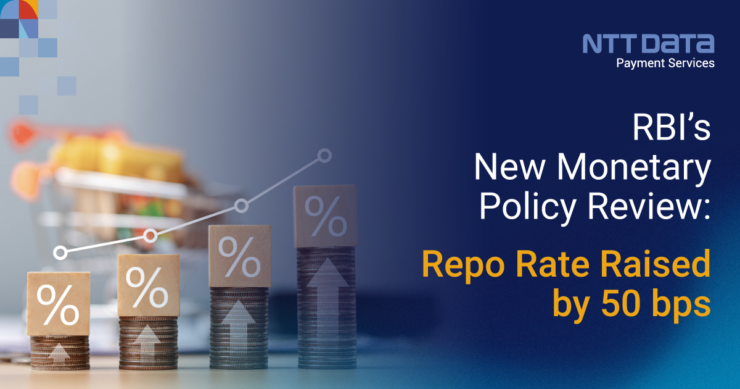
Table of Contents [show]
Following a three-day meeting of the central bank’s Monetary Policy Committee (MPC), RBI Governor Shaktikanta Das announced a 50-basis-point hike in the repo rate. The decision of the six-member MPC was made public on September 30, 2022 (Friday), to reduce the prolonged above-target retail inflation rate.
The key interest rate, or repo rate, at which the RBI loans short-term funds to commercial banks is currently at 5.90%, the fourth consecutive increase in the current cycle.
To lessen the effects of the COVID-induced lockdown, the RBI lowered the repo rate in March 2020. It then kept the benchmark interest rate unchanged for nearly two years until increasing it on May 4, 2022.
As central banks struggle to combat soaring inflation, the RBI has currently hiked the repo rate by 190 basis points in four installments since May.
RBI’s new monetary policy: Key Highlights
Here are the key highlights of RBI’s bi-monthly monetary policy review
- For the fourth time in a row, the RBI increased the repo rate by 50 basis points to 5.9% with immediate effect. MPC decided to maintain its focus on “withdrawal of accommodation.”
- RBI’s governor Shaktikanta Das mentioned that the committee’s decision to increase the repo rate is due to the soaring inflation rates in the country. He said that inflation is expected to come down to the target of 4% over two years.
- In order to strengthen measures for compliance with globally accepted prudential rules, the RBI proposed that the country’s lenders adopt the expected loss method for the loss allowances they must maintain regarding their exposures.
- The inflation forecast has remained unchanged. Consumer Price Index (CPI) inflation has been projected by the RBI to remain at 6.7% for FY23.
- When it comes to the GDP growth forecast, the real gross domestic product (GDP) growth prediction for FY23 has been cut by the RBI from 7.2% to 7%.
- According to The Economic Times, RBI Guv said, “the current account deficit (CAD) for Q1:2022-23 is placed at 2.8 per cent of GDP with trade deficit at 8.1 per cent of GDP. Various leading indicators, including global PMIs, point to the weakening of global growth momentum and downside risks to global trade.”
It has also come to our notice that India’s import growth, despite hitting some breaks, has exceeded the export growth.
- The rates for the marginal standing facility (MSF) and the standing deposit facility (SDF) were both raised by the same percentage, to 5.65% and 6.15%, respectively.
- High-frequency data for the second quarter show that the economy is still robust and that private consumption has held steady. Rural demand and investment demand are progressively increasing, with the agriculture sector remaining resilient.
According to RBI officials, the central bank provided reasonably balanced advice, highlighting the need to maintain robust domestic economic growth while emphasizing the risks of escalating financial and economic turmoil around the world. Overall, the markets have responded favourably to the policy announcement.
How will this impact your finances?
After the inflation rate went above the central bank’s target level, the RBI raised repo rates for the fourth time in this cycle. This is consistent with the US Federal Reserve’s recent announcement of its third consecutive 75-basis-point rate hike, which was done without showing any signals of slowing down.
Though the effect of this hike is yet to be seen on inflation, here’s how it will impact your finances and EMIs:
1. High borrowing cost
An increase in the repo rate automatically translates to a higher borrowing cost. This is due to the fact that when repo rates rise, it also results in rising borrowing costs for banking institutions, which are then passed on to account holders in the form of higher interest rates on loans and deposits.
2. Decreased purchase of goods and services
Even if increasing the repo rate is vital to battle inflation, doing so repeatedly in a short time would unintentionally have a negative effect on the nation’s economic growth.
Since people tend to buy fewer goods and services, it will directly affect demand, and ultimately, the overall growth is slowed down.
3. Home loans to become expensive
With an increase in the repo rate, the EMIs on your home loan, car loan, and other loans are also expected to rise. You will have to pay an increased EMI for the same amount of loan.
It’s advised to extend your loan period to save yourself from the adverse effects of this price hike!
Conclusion
The MPC conducts bi-monthly reviews of the monetary policy, and this blog was the gist of everything that happened this September, 2022. The committee’s decision to increase the repo rate by 50 bps resulted due to the increasing inflation rates in the country. Though these price hikes can severely affect the financial stability of the common man, the financial markets have responded positively to all the policy announcements.


